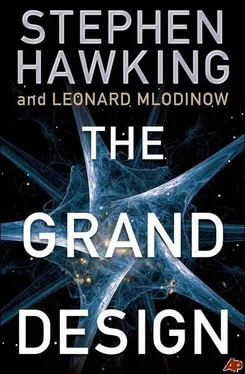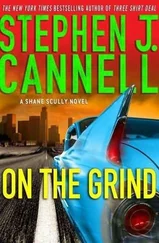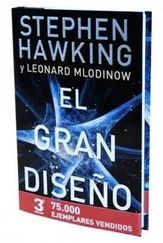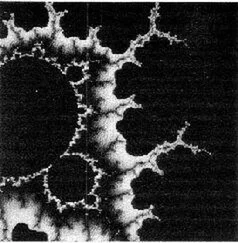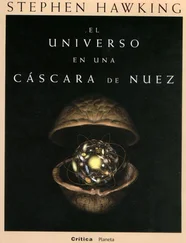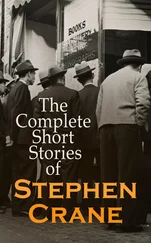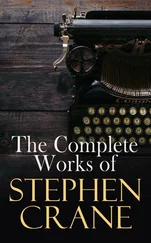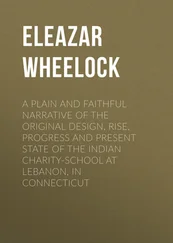Suppose that, as before, we send a stream of particles toward the barrier in the double-slit experiment and collect data on the first million particles to get through. When we plot the number of particles landing at various detection points the data will form the interference pattern pictured, and when we add the phases associated with all the possible paths from a particle’s starting point A to its detection point B, we will find that the probability we calculate of landing at various points agrees with that data.
Now suppose we repeat the experiment, this time shining lights on the slits so that we know an intermediate point, C, through which the particle passed. (C is the position of either one of the slits or the other.) This is called “which-path” information because it tells us whether each particle went from A to slit 1 to B, or from A to slit 2 to B. Since we now know through which slit each particle passed, the paths in our sum for that particle will now include only paths that travel through slit 1, or only paths that travel through slit 2. It will never include both the paths that go through slit 1 and the paths that pass through slit 2. Because Feynman explained the interference pattern by saying that paths that go through one slit interfere with paths that go through the other, if you turn on a light to determine which slit the particles pass through, thereby eliminating the other option, you will make the interference pattern disappear. And indeed, when the experiment is performed, turning on a light changes the results from the interference pattern, to a pattern like that! Moreover, we can vary the experiment by employing very faint light so that not all of the particles interact with the light. In that case we are able to obtain which-path information for only some subset of the particles. If we then divide the data on particle arrivals according to whether or not we obtained which-path information, we find that data pertaining to the subset for which we have no which-path information will form an interference pattern, and the subset of data pertaining to the particles for which we do have which-path information will not show interference.
This idea has important implications for our concept of “the past.” In Newtonian theory, the past is assumed to exist as a definite series of events. If you see that vase you bought in Italy last year lying smashed on the floor and your toddler standing over it looking sheepish, you can trace backward the events that led to the mishap: the little fingers letting go, the vase falling and exploding into a thousand pieces as it hits. In fact, given complete data about the present, Newton’s laws allow one to calculate a complete picture of the past. This is consistent with our intuitive understanding that, whether painful or joyful, the world has a definite past. There may have been no one watching, but the past exists as surely as if you had taken a series of snapshots of it. But a quantum buckyball cannot be said to have taken a definite path from source to screen. We might pin down a buckyball’s location by observing it, but in between our observations, it takes all paths. Quantum physics tells us that no matter how thorough our observation of the present, the (unobserved) past, like the future, is indefinite and exists only as a spectrum of possibilities. The universe, according to quantum physics, has no single past, or history.
The fact that the past takes no definite form means that observations you make on a system in the present affect its past. That is underlined rather dramatically by a type of experiment thought up by physicist John Wheeler, called a delayed-choice experiment. Schematically, a delayed-choice experiment is like the double-slit experiment we just described, in which you have the option of observing the path that the particle takes, except in the delayed-choice experiment you postpone your decision about whether or not to observe the path until just before the particle hits the detection screen.
Delayed-choice experiments result in data identical to those we get when we choose to observe (or not observe) the which-path information by watching the slits themselves. But in this case the path each particle takes-that is, its past-is determined long after it passed through the slits and presumably had to “decide” whether to travel through just one slit, which does not produce interference, or both slits, which does.
Wheeler even considered a cosmic version of the experiment, in which the particles involved are photons emitted by powerful quasars billions of light-years away. Such light could be split into two paths and refocused toward earth by the gravitational lensing of an intervening galaxy. Though the experiment is beyond the reach of current technology, if we could collect enough photons from this light, they ought to form an interference pattern. Yet if we place a device to measure which-path information shortly before detection, that pattern should disappear. The choice whether to take one or both paths in this case would have been made billions of years ago, before the earth or perhaps even our sun was formed, and yet with our observation in the laboratory we will be affecting that choice.
In this chapter we have illustrated quantum physics employing the double-slit experiment. In what follows we will apply Feynman’s formulation of quantum mechanics to the universe as a whole. We will see that, like a particle, the universe doesn’t have just a single history, but every possible history, each with its own probability; and our observations of its current state affect its past and determine the different histories of the universe, just as the observations of the particles in the double-slit experiment affect the particles’ past. That analysis will show how the laws of nature in our universe arose from the big bang. But before we examine how the laws arose, we’ll talk a little bit about what those laws are, and some of the mysteries that they provoke.
5 The Theory of Everything
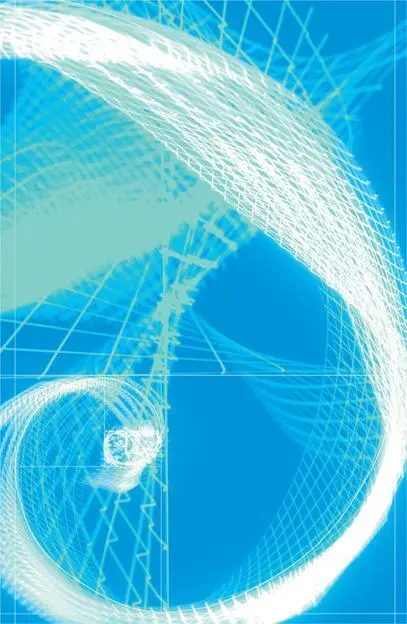
***
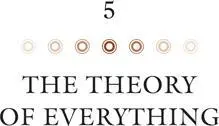
The most incomprehensible thing about the universe is that it is comprehensible.
– ALBERT EINSTEIN
THE UNIVERSE IS COMPREHENSIBLE because it is governed by scientific laws; that is to say, its behavior can be modeled. But what are these laws or models? The first force to be described in mathematical language was gravity. Newton’s law of gravity, published in 1687, said that every object in the universe attracts every other object with a force proportional to its mass. It made a great impression on the intellectual life of its era because it showed for the first time that at least one aspect of the universe could be accurately modeled, and it established the mathematical machinery to do so. The idea that there are laws of nature brings up issues similar to that for which Galileo had been convicted of heresy about fifty years earlier. For instance, the Bible tells the story of Joshua praying for the sun and moon to stop in their trajectories so he would have extra daylight to finish fighting the Amorites in Canaan. According to the book of Joshua, the sun stood still for about a day. Today we know that that would have meant that the earth stopped rotating. If the earth stopped, according to Newton’s laws anything not tied down would have remained in motion at the earth’s original speed (1,100 miles per hour at the equator)-a high price to pay for a delayed sunset. None of this bothered Newton himself, for as we’ve said, Newton believed that God could and did intervene in the workings of the universe.
Читать дальше
